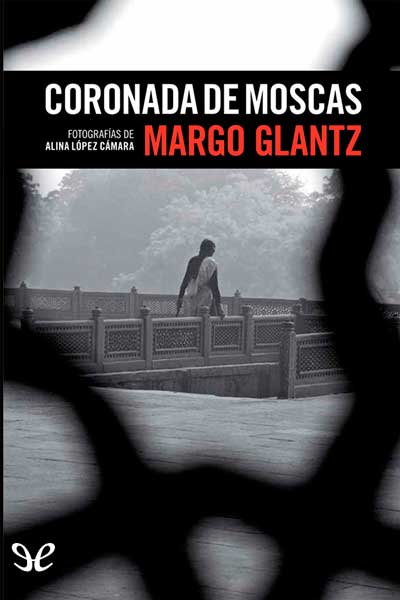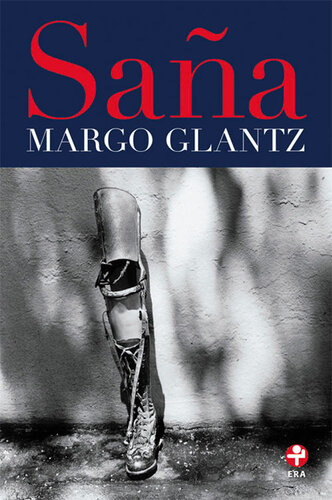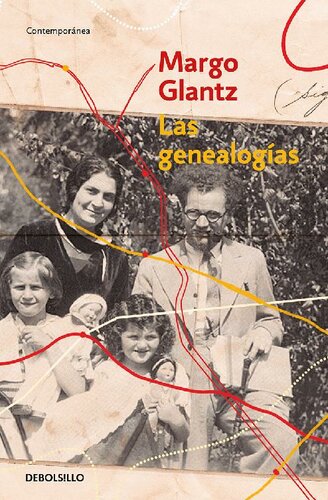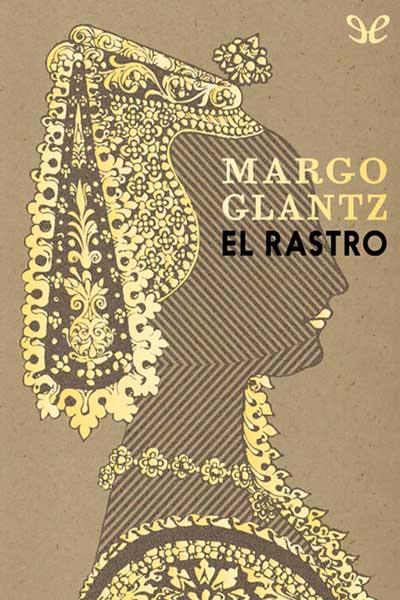oleebook.com
The Remains de Margo Glantz
de Margo Glantz - GĂ©nero: English
Sinopsis
After her ex-husband dies unexpectedly, Nora GarcĂa travels to the funeral, back to a Mexican village from her past and the art and music of their life together.
The way you hold a cello, the way light lands on a Caravaggio, the way the castrati hit notes like no one else could—a lifetime of conversations about art and music and history unfolds for Nora GarcĂa as she and a crowd of friends and fans send off her recently deceased ex-husband, Juan. Like any good symphony, there are themes and repetitions and contrapuntal notes. We pingpong back and forth between Nora's life with Juan (a renowned pianist and composer, and just as accomplished a raconteur) and the present day (the presentness of the past), where she sits among his familiar things, next to his coffin, breathing in the particular mix of mildew and lilies that overwhelm this day and her thoughts. In Glantz's hands, music and art access our most intimate selves, illustrating and creating...
Descargar
Descargar The Remains ePub GratisReseñas Varias sobre este libro
Longlisted for the Oxford-Weidenfeld Prize
Shortlisted for the 2023 Warwick Prize for Women in Translation
Later, I understood (Gould added, Juan explains) (Juan and (also) Gould (or rather his words) (as relayed by Juan) are still tearing at me) that a piece of music, however long it may be, had to maintain a specific — was going to say tempo, but that's not the right word — a specific beat, a fixed rhythmic point of reference.
The Remains (2023) is Ellen Jones's translation of Margo Glantz's 2002 novel El rastro and gives us the thoughts of Nora Garcia at a wake for her ex-husband Juan, a composer and pianist, who abruptly left his family some years earlier, and then died of heart disease.
This is actually a re-translation since the book previously appeared as The Wake in a 2005 translation by Andrew Hurley in the US. The translator's helpful afterword doesn't mention this, although it may hint at a reason for redoing the work, since Jones notes the care needed to reflect the variations in the original in her translation:
strangely enough, translating Glantz's apparently loose, iterative style demanded unusual precision, becuase every slight variation in her expression of an idea or image contributes to the structural coherence of the whole. It helps depict a protagonist on the verge of collapse - a woman who focuses obsessively on details to postpone having to confront a mixture of grief, rage and resentment. It matters that Nora at first perceives Juan's jacket to be the colour of hay, and then burnt straw, and then moss and then olive. It matters that she contradicts herself. It matters that she gets song lyrics slightly wrong.
That said, a quick Google-books search suggests Hurley also used similar variations.
This theme of variations is key to the novel's text and construction. When Nora arrives at the wake she is approached by a woman Maria, who is determined to tell the story, or her version of it, of Juan's illness and death, in exhaustive, repetitive, detail, leaving Nora's mind to wander first to her clothes and then to the topic of musical variations:
I admire her impeccably cut silk blouse — Armani? (a designer I adore but whose clothes I never buy because I'm cheap). Why did I come so poorly dressed to this funeral? A pearl grey pashmina wrapped around her neck (it might even be a shahtoosh — it's delicate, with flowers in different shades of grey embroidered round the edges (darker than the rest of the cloth, and in the middle there's a red, maybe cherry-coloured circle — the colour of the flowers on the tips of the flame tree's naked branches?), yes, pastel-coloured pashminas are very fashionable these days, although the truly elegant prefer to buy a delicately soft shahtoosh, they're warmer than sables and weigh nothing at all!) (why wear a pashmina somewhere this hot?). Her shoes have a low heel, very simple — perfectly elegant — her trouser suit is a deep crimson, almost black, perfectly cut (of course) (Emmanuelle Khanh, a label hardly anyone knows around here). She's still talking, hurriedly, as though her very life were at stake, as though she were performing Marin Marais's variations, the ones the French composer wrote for the viola de gamba - an instrument used in the seventeeth century as a continui, a constant, stubborn accompaniment - and which I can hear right now, adapted for the recorder, yes, Marias's Follies of Portugal, whose frenetic, convulsive rhythm is eased by the slender but intense - persistent - sound of the transverse flute.
Nora's own thoughts are intense, highly circular and erudite - although much of the erudition comes from thoughts relayed by Juan, who as Jones's notes is something of a champion mansplainer - as Nora comments at one point when recalling a 'conversation' at a gathering of friends: "Juan would tell us in the long conversations (monologues more ) we used to have in this very spot where weÂ’re now holding vigil over his body, that ...":
The thoughts cover (with variations) topics such as Glenn Gould's two performances of the Goldberg Variations which bookended his career, the history of heart surgery, Castrati in opera singing and the closest we get to their sound in modern music, Caravaggio’s paintings, Doestevsky’s The Idiot, and Mexican literature and music such as the sonnets of Sor Juana Inés de la Cruz.
The novel's tone is at times Bernhardian (Gould's performances of course also key to his novel Der Untergeher) and the use of erudition Sebaldian (the novel was written while Sebald was still active), but this is an acknowledged influence:
For some reason I can't quite explain, as I write these lines describing Juan's funeral, I'm reading Sebald or Dostoyevsky, Bernhard or Rousseau, listening to Seppi Kronwitter, the young Tolzer singer in the recording of Bach's cantata (who, thanks to this recording, will forever be a child, or rather, his voice will forever be preserved in its perfect, angelic childhood state, through the magic art of recording), conducted by Nikolaus Harnoncourt; certain characters are seated: he is, they are, I am too.
Indeed, Nora rather dismisses both Juan's arguments and those of Bernhard - her losing patience while reading the great Austrian a way of also signalling her frustration with her ex-husband:
For me, Gould said, the Variations contain magnificent passages as well as truly dreadful ones (in one of the Thomas Bernhard books I have on my bedside table — I tend to lose patience while reading him — he does something similar, disparaging almost all the great contemporary writers and musicians). (The two pianists could not have more different understandings of music and performance! Richter would play very different pieces with the same passion: he knew how to draw out what was extraordinary about them and, instead of disparaging them, he revered them.) Gould concluded his emphatic observations with this crushing (and presumptuous) sentence: as a work of art, as a concept, which is to say, in their entirety, the Goldberg Variations are a failure (to reiterate, I really do not agree with Gould nor with Bernhard nor with Juan).
Fascinating - and a book that really should have featured on the International Booker list. 4.5 stars (the lack of a 5th star more due to my lack of knowledge and therefore appreciation of much of the music referenced).2023 bernhardian charco-press ...more19 s Tony961 1,689 Read
All the "action" in this novel takes place at a funeral. The first-person narrator identifies herself straightaway: My name is Nora GarcĂa. Nora has returned for this funeral, but we only very slowly learn the particulars. The deceased was Nora's ex-husband, and the venue was her former home. Juan, the ex, was a pianist and composer; Nora, a cellist. They did play together, but more often, it seemed, Juan would lecture her about music. We're not sure if Nora felt condescended to during the lectures; it seems not. Regardless, that doesn't appear to be the reason for the separation. Instead, there is the barest hint at infidelity:
Yes, I know everybody loved him (mind you, my main feeling toward him is resentment, but as the tango goes, resentment, my old resentment, I'm scared you might really be love).
But that's not the point of the book, not those particulars. I'm told (on the book's back cover) that this is a good symphony, with themes and repetitions and contrapuntal notes. The main theme is: Life is an absurd wound. The repetitions were various: the particulars of open heart surgery; how you should only play Schubert on a Bösendorfer; what makes a good castrati; the difference in length of Glenn Gould's two recordings of the Goldberg Variations; what to do with Nastasya Filippovna's body in that Dostoyevsky novel. The contrapuntal notes are that old resentment, the competing chambers of the human heart, the reconciliation of the present with the past.
Nora GarcĂa thinks all this, shuffles it, maybe she's writing it:
Words acquire a weight when they're written down, after I rest my fingers on the keys, in the silence of the night, only a love yours has moved my heart that way.charco mexican music15 s Robert2,163 231
Life is an absurd wound: I think I deserve to be given condolences
The above quote summarises what The Remains is about: A cellist, Nora, attends her pianist/composer ex husbandÂ’s funeral and this sets off a train of interconnecting thoughts in the vein of Sebald or Lucy EllmannÂ’s Ducks, Newburyport .
ThereÂ’s a myriad of topics touched ranging from Gould and BachÂ’s Goldberg Variations, Caravaggio, DostoevskyÂ’s The Idiot, BeethovenÂ’s early compositions, Satie and digital vs physical sheet music. ThatÂ’s just naming a few of the many topics analysed. a symphony this monologues works cyclically so topics are returned to and mentioned constantly.
On a deeper level what we are seeing is a statement from a person who has not been treated properly for her married life and this is her verbal ‘revenge’. Nora is letting out everything she has ever kept from us about the man she stayed for a while. We do get glimpses of his character and we hear Nora’s criticism at the phonies who attend the funeral pretending to know him when only she can provide a true picture. One could say her marriage was an absurd wound and we readers are finding out why.
The Remains is excellent: a thought provoking feminist novel which has crumbs of dry humor and teaches you something in the process, as my knowledge of classical music is not strong, I learnt quite a few things about The Remains monologue. Also do read the translator’s afterword – it gives an interesting look at the process of translating a monologue is .13 s SylviaAuthor 21 books303
Esta es tanto una novela como un concierto. Esta es tanto una novela de duelo como una novela de celebraciĂłn. La protagonista, Nora GarcĂa es chelista y Juan, su ex esposo, pianista y compositor, ha muerto. Nora asiste a su funeral y, de ese modo, asistimos como lectores a un hermoso soliloquio.
Nora observa los detalles de este funeral tanto como los detalles de esa la vida que compartió con Juan. Nora observa los detalles de los dolientes como observa los detalles de los músicos, los personajes, las piezas musicales, la vida entre notas, páginas, viajes y conciertos.
Este soliloquio se mueve en cĂrculos, no es de sorprenderse que existan repeticiones, reiteraciones, un constante volver a lo que no se puede volver más que con la memoria.
La escritura breve que conocĂa de Glantz acá se olvida, este es un ejercicio de largo aliento, este es un fluir de la conciencia y de los sentidos, este es un transitar por oraciones coordinadas y subordinadas, parĂ©ntesis dentro de parĂ©ntesis, recuerdos que si bien no se tropiezan, caminan al mismo tiempo por sus palabras con el ritmo, ya lo dije, del mejor de los conciertos.11 s Claire719 312
How to describe this incredible literary masterpiece. A lyrical elegy of tempo rubato.
A Symphony of Reluctant Grief
A divorced woman, Nora Garcia (a cellist), returns for her deceased ex-husband JuanÂ’s, (a pianist and composer) funeral; back to a Mexican village from her past, through the art and music they played and navigated together.
A lyrical and rhythmic form of elegy that, rather than speak about the person who has passed, we experience something of a past version of that person; they are almost present, seen through the distorted lens of a reluctant, grieving ex. We can almost hear his continuous and relentless explanations to his often-time audience of one.
It felt listening to a symphony in words, as with music, thoughts and conversations repeat with slight changes over time.
Revelatory thoughts of the woman who knew a man best, observing the body, imagining the isolation and neglect of a heart, that brought this death about. The incantation going into detail of the functions and dysfunctions of the heart, both as the pump that irrigates the body and the metaphor for feelings of love and neglect.
The heart has impulses that reason doesnÂ’t know.
A Different Kind of Garden Party
The novel is set in the present, on the afternoon that the body is displayed in the coffin in a room, and our narrator is a guest many others, who arenÂ’t sure to whom, they ought to offer condolences. She overhears snippets of conversations, adding to the cacophony of her own reflections.
Its not death goes around whispering in our ear, though, does it? It just arrives, suddenly, when we least expect it. Silence falls and I move away – he’s right, I think, death doesn’t whisper in our ear, it just arrives, alone, without warning us in advance. I don’t care how simple dying or anything else is for that matter, even if it was that simplicity that made his heart explode, made it shatter into pieces (mine too), yes, life, the absurd wound that is life, yes, it’s true, the heart is only a muscle that irrigate the body, keeping it alive, a muscle that one day fails us.
Bach, Beethoven, Gould & Open Heart Surgery
Scenes and topics of conversation from the past circulate through her mind as she observes all around her. Much of it is about music, about their preferences, their differences told through how revered pianists played the music of Bach, Beethoven and more.
In her grief, she writes intense descriptions of a person talking to her, observing visual elements, lips moving, facial gestures, drifting off and away, out of her own body, hearing nothing of the tedious chatter. Her thoughts range from music, pianists, the genius castrati voices of eighteenth century Italian opera, to the intricacies and origins of open-heart surgery.
Grief arrives unbidden, tears overflow, the intellect refuses it, reprimands her, convinces her she doesnÂ’t care. The body does not comply. She recalls evenings spent listening to great pianists, their heated arguments, wondering if it was due to their diametrically opposed ways of seeing the world.
Though I don’t profess to know too much about the world of classical music or the work of all the names mentioned – the way Glantz takes the reader on a voyage through these subjects, venturing into them in depth, returning again in brief, then jumping into subjects of the heart – was compelling to read, in a mesmerising way.
Her reassessing of her relationship, observing the many people come to farewell the man she doesnÂ’t know whether she loved or despised, while in the throe of grief, bewilderment and loss, showing us how lives intersect and continue to have a presence in the mind of another, long after separation.
Brilliant.
“Life is an absurd wound: I think I deserve to be given condolences.”2023-women-in-translation around-the-world-2023 classic ...more11 s1 comment Lucas SierraAuthor 2 books530
Hacia una poética de la contemplación narrativa (Reseña, 2019)
Margo Glantz me ha sugerido un gĂ©nero, un mecanismo. El rastro, novela que en esta oportunidad me ocupa, bien puede no ser novela en absoluto. La estructura narrativa, camaleĂłn de prosa, llegue tal vez a confundir al lector, pero, si se es avezadx, descubrimos en ella la densidad de los pequeños poemas en prosa, esta vez sin el “pequeños”. Este texto es un largo poema, una bĂşsqueda que empieza y vuelve a empezar y vuelve a empezar y vuelve a empezar y permanece siempre empezando (toda la poesĂa realmente buena está siempre empezando). Este texto, si se observa con la atenciĂłn del botánico y el desconcierto del colibrĂ, comprende dentro de sĂ un lĂmite intermitente entre la poesĂa, el ensayo, la novela y casi cualquier otra forma narrativa que alcance uno a enumerar. Lo de Glantz es oficio bien llevado y, además, la preocupaciĂłn de a quien hiere la belleza. La anĂ©cdota del relato, sencilla, sencillĂsima, se enriquece en los matices de la observaciĂłn de la narradora. Pizarnik escribiĂł que era la revoluciĂłn mirar una rosa hasta cegarse. AquĂ la narradora mira el corazĂłn y Ă©ste, por supuesto, termina quitándole la vista para darle la mirada profĂ©tica de los antiguos sabios griegos.
Una mujer acude al velorio de su exmarido y allĂ se dedica a recordarlo como excusa para vadear las preguntas que la presencia de la muerte deja siempre. Con la historia de su amor, escalada en brevĂsimos instantes; con las imágenes de una cotidianidad que la memoria acerca a la gramática de los sueños; con todas las dudas acunadas en cada certeza, desde la presencia de una perra en el funeral hasta el canto de los mariachis; con la lucidez de quien mantiene los ojos bien abiertos para ver, los oĂdos bien abiertos para ver, la piel bien abierta para ver, con esa necesidad de ver para contar, la narradora nos entrega un relato delirante, lleno de hallazgos, como quien presenta el trofeo obtenido luego de una lucha larga, larga y vana, larga y vana y estĂ©ril, sin mayor orgullo, sin mayor fiesta, con la tranquilidad de haber sido vehĂculo para lo inevitable. Enlaza la autora, con fluidez, la mĂşsica, la historia de la mĂşsica, lo cotidiano, lo eternamente repetido y nuevo de las historias de amor. Digo “con fluidez”, debo añadir: “con fuerza”. Narrativamente este texto es un terreno empinado por el que resbalas, sin quererte aferrar en ningĂşn momento.
Lo mejor de Glantz es su capacidad de extender el tiempo. En El rastro el tiempo no avanza segĂşn la lĂłgica de las manecillas. En muchas otras obras tampoco lo hace, pero en esta su dilataciĂłn (Âżsu dilaciĂłn?) se debe en gran medida a la necesidad de la narradora de detenerse en los detalles. Un trapo sirve para volver a pensar en una velada vieja, hace muchos años vivida, frente a una chimenea apagada. Basta pensar en las partituras para encontrar un largo excurso sobre las ventajas de la tecnologĂa y la necesidad, sin embargo, de que el trabajar con las manos siga siendo una labor necesaria para agradar a los dioses. Glantz consigue crear una narradora capaz de entretenerse en cada cosa y generar, a partir de la mera observaciĂłn de las cosas, toda una poĂ©tica de lo Ăntimo, de lo doloroso, de lo desesperado, de lo cálido. Toda una poĂ©tica del mundo cuya fuente es sĂłlo la observaciĂłn del instante.
Memoria, evocaciĂłn, reflexiĂłn, apunte suelto. Los cabos de la cabeza van fluyendo. En este texto sobre el corazĂłn palpita otro corazĂłn inesperado. Uno que va en los ojos. Uno que aprende su fluir desde las pupilas hasta la luz, desde la luz hasta el centro del cerebro. Flujo de palabras capaces de darle forma al mundo que fluye. Flujo de imágenes que terminan componiendo la constelaciĂłn del tiempo disgregado, del tiempo convertido en el titán caĂdo bajo los puños de su hijo más joven. AquĂ esta ese corazĂłn irrigando las pĂ©rdidas, convirtiendo en bĂşsqueda el existir. Porque tambiĂ©n nosotros somos completamente Ăłrganos palpitantes. A cien, a ciento y punta latidos por segundo.8 s John Dishwasher John DishwasherAuthor 2 books49
The protagonist-narrator attends the wake and funeral of her ex-husband and is triggered into a rather manic and quite poetic contemplation of the mystery of life. Simultaneously she is close enough to the deceased to be deeply affected by his departure, but distant enough from him to maintain a removed perspective and not be overwhelmed by grief. This allows for 172 pages of quasi-stream of consciousness prose that demonstrates but never frankly states what might be called ‘the harmony of opposites.’
Though opposites of all types are thrown into counterpoint in this book, mostly Glantz shows where the corporal and the spiritual find balance. The first of two principal avenues for this is through the human heart, which besides being a physical organ is also a conveyor of the spiritual. So the heart in all its physical aspects is mused upon in this stream – its pumping of blood, it as a simple muscle – But also the heart proving itself as the seat of emotion and yearning and need. There is a place where these two meet, in heartbreak or ecstasy, where the spiritual and the physical fuse and find exquisite balance, or harmonize. Glantz’s quasi-stream of consciousness becomes sometimes essayistic as she goes into things the first open heart surgery in history. And also poetic, as she returns rhythmically and continually to key phrasings. The second principal avenue where this harmony happens, in her estimation, is through music. She uses the two Goldberg Variations by Glenn Gould, ones which he recorded at the beginning and end of his career, as a beginning place for this idea. Also she meditates on medieval boys who were castrated before puberty so that their voices would find that perfect balance between the masculine and the feminine when they matured. This review delineates Glantz’s ideas as separate in a way which makes her observations seem prosaic. It’s not at all that. Her book feels instead oracular.
The theme of the reconciliation of the body with the soul has always fascinated me and was one of the first ideas that sucked me into literature after I read Narcissus and Goldmund by Hermann Hesse at the age of 20 in 1988. Later I found it also in Nikos Kazantzakis and others. Glantz treats the theme in a new way for me, showing that the corporal and the spiritual are never truly reconciled, but sometimes, in fleeting moments, can meet and mesh. When this happens ‘el rastro’ or ‘the trace’ of perfection slips into our world.
theme-affirms-humanity-and-society theme-body-soul-reconciliation theme-confusion-existential ...more6 s Oscreads415 247
This book is brilliant!!! Wow what an experience. The writing and style ate down! 4 s Lisa177 8
This is the third @charcopress book I've read and it seems books from this publisher guarantee excellent writing and translations. Despite the wonderful writing, this is very heavy on classical music and composers, which was a little too much for me! If you these two things, then this is the book for you.
Autor del comentario:
=================================



